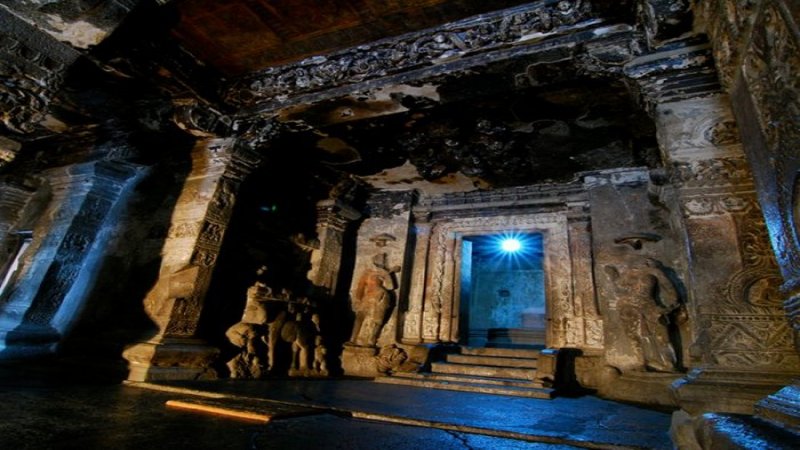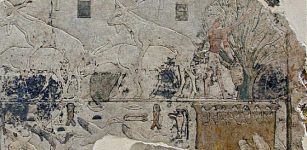10 Remarkable Advanced Ancient Technologies Ahead Of Their Times
MessageToEagle.com – In this top list we take a closer look at striking examples of advanced ancient technologies that were far ahead of their times. Some of these sophisticated ancient inventions were later re-invented by our modern society, but not all. There is no doubt ancient people possessed highly advanced knowledge in a number of areas.
1. Could Ancient Peruvians Soften Stone?
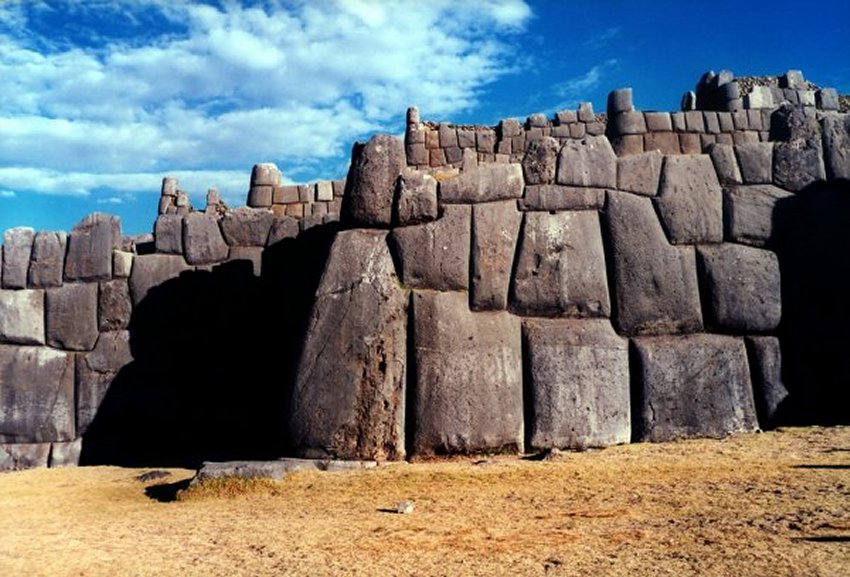
Archaeologists and other scientists have been scratching their heads trying to figure out how remarkable ancient Peruvian structures like Sacsayhuamán were constructed. This marvelous structure consists of gigantic stones so heavy that our modern machinery can hardly move and put in place. Does the key to the puzzle lie in a certain very specific plant that gave the ancient Peruvians possibility to soften stone or is the answer to the mystery access to advanced ancient technology that could melt stone?
According to researchers Jan Peter de Jong , Christopher Jordan Jesus Gamarra, the granite walls in Cuzco show evidence of being heated to a very high degree and vitrified- the outside surface becoming glassy and very smooth. Based on this observation, Jong, Jordan and Gamarra draw the conclusion that “some sort of high tech device was used to melt stone blocks which were then placed and allowed to cool next to hard, jigsaw-polygonal blocks that were already in place.
Researchers Jong and Jordan propose that several ancient civilizations world-wide were familiar with the high-tech melting of stone technology. They also say that “the stones on some of the ancient streets in Cuzco have been vitrified by some high temperature to give them their characteristic glassy texture. Read more
2. Sound Manipulation
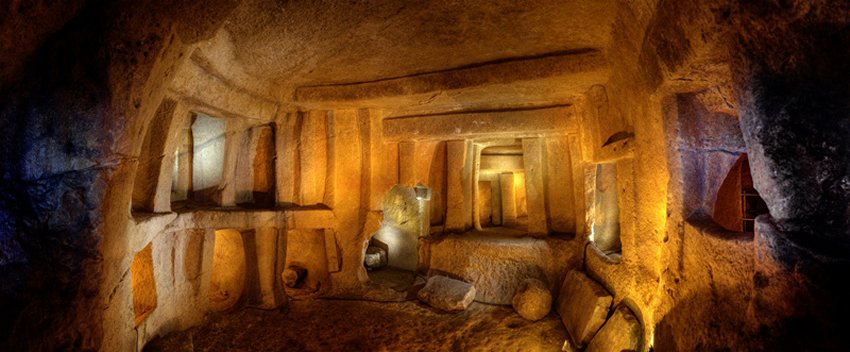
The Hypogeum of Hal-Saflieni in Malta has special significance due to its remarkable acoustic properties. The Hypogeum of Hal-Saflieni is an underground cave system covering around 500m² on 3 levels, with various inter-connecting corridors and passageways that lead to a number of small chambers, built between 3000-2500BC.
The cave system was re-discovered in 1902 and since then there has been particular interest in one of the rooms, named the “Oracle Chamber”. With its ceilings intact, the underground structure holds secrets of a strange play of sound in the stone rooms and halls; a “forgotten” technology which operates on the human emotional sphere. The space is said to amplify voices dramatically, with certain frequencies resonating enough to be felt through the body. The Hal Saflieni hypogeum has a dark history.
Researchers have discovered the hypogeum of Hal Saflieni contained the bodies of over 7,000 people, a ‘speaking chamber’, trilithons, lintelled-doorways, a large cistern and a ‘holy of holies’ surrounded by ’embryonic’ chambers. What experiments were conducted in this bizarre and mysterious place? Read more
3. The Lycurgus Cup: Fascinating Artifact That Reveals Prehistoric Knowledge Of Nanotechnology
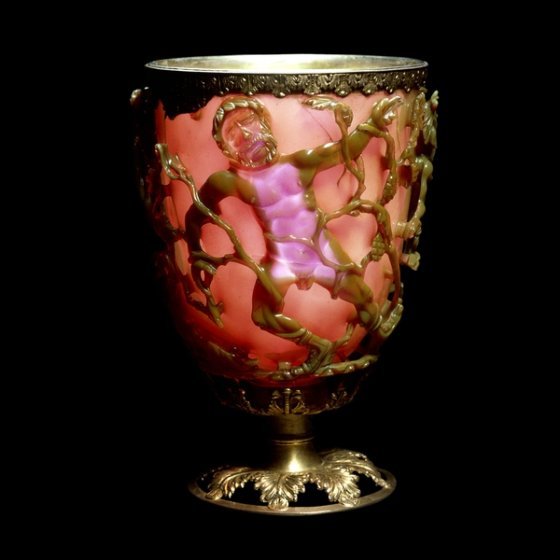
This amazing artifact clearly shows that our ancestors were far ahead of their time. In fact they were so advanced that they may even have been inventors of what we today call nanotechnology. This extraordinary cup is the only surviving complete example made from dichroic glass, which changes colour when held up to the light. When light is shone through the body of the cup it turns from opaque green to a glowing translucent red. The glass contains tiny amounts of colloidal gold and silver, which give it these unusual optical properties. Read more
Another good example revealing our ancestors were familiar with nanotechnology are the strange microscopically small nanospirals within material that had to be at least 100,000 years old have been detected in several places, during a routine investigation of mineral deposits in the Ural Mountains in 1992. The origin of these extraordinary but strange artifacts that the human eye can barely see – is still not explained. Read more
4. Batteries In The Ancient World
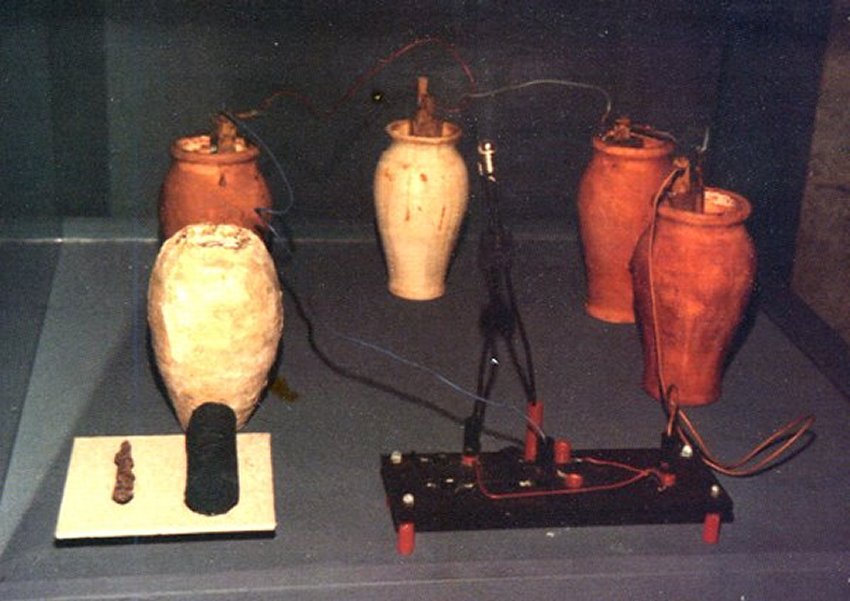
A small, undecorated artifact with rather plain appearance, is believed by some scientists to be an example of a prehistoric, electrical power source. It’s the so-called Baghdad Battery, also known as the Parthian Battery. The artifact – thought to be a 2,000-year-old electric battery – was found in 1936 by railroad workers in the area of Tel Khujut Rabu, south of Baghdad. Most sources date the batteries to around 200 BC, but the first known electric battery – the Voltaic pile – was not invented by Italian physicist Alessandro Volta until 1799.
The bottoms of these mysterious cylinders were capped with copper discs and sealed with bitumen or asphalt. Another insulating layer of bitumen sealed the tops of the pots and held in place iron rods suspended into the center of the copper cylinders. The rods showed a strong evidence of having been corroded by an acid solution that evaporated long ago. Read more
5. Incredible Ancient Metallurgical Wonders

The Antediluvians had technologies that matched our own; there are also serious indications that in certain areas they even possessed extraordinary knowledge, which has only hardly been nudged by our present-day science. Highly advanced hardening techniques of the ancients as well as ancient castings of large pieces were widespread in antiquity. Our ancestors were in possession of an extremely sophisticated scientific knowledge of metalworking from an earlier civilization and evidence of this knowledge was found in different parts of the world. China with a long history in metallurgy, was the earliest civilization that manufactured cast iron and some of the ancient Chinese feats of casting iron are so impressive as to be almost unbelievable.
Ancient Indians, for example, produced iron capable of withstanding corrosion, most likely due to the high phosphorus content of the iron produced during those times. A column of cast iron 23 feet (7 meters) high, weighing approximately 6 tons with diameter of 16.4 inches stands in the courtyard of Kutb Minar in Delhi, India.
An inscription in the Sanskrit language informs that the column was originally erected in the temple of Muttra and capped with Garuda – “Messenger of the Gods” – an image of the bird incarnation of the god Vishnu, the Indian god known as “The Preserver”. Read more
6. Proof Of Superior Ancient Drilling Holes Technology – Found In All Four Corners Of The World
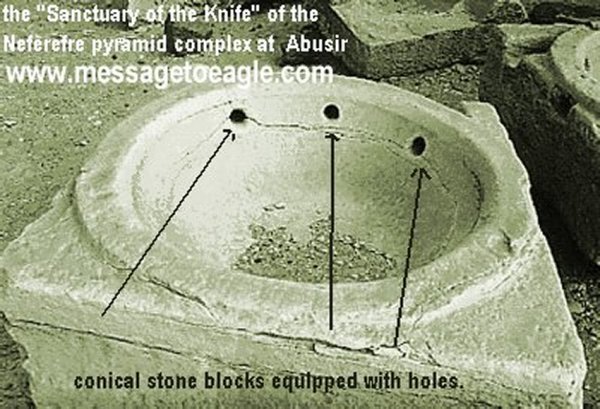
This incredible technology was widespread in antiquity and evidence of it can be found in all corners of the world. Prehistoric builders used stones, the toughest surfacing material found on Earth to create perfectly round holes.
This impressive cutting-holes-in-stone technique reveals our ancestors were familiar with an extremely advanced technology we have long been unable to use. Large-sized holes found in ancient stone demanded engineering skills and proper cutting equipment. Read more
7. Legendary Viking Crystal Sunstones Helped Vikings To Navigate
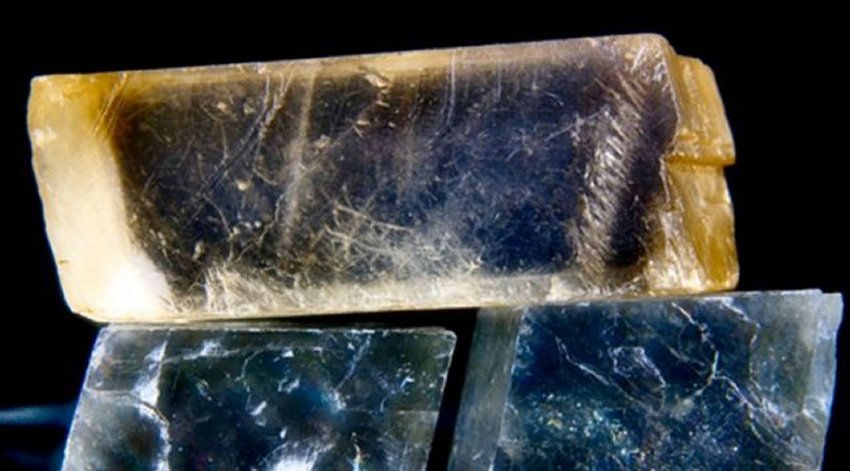
The Norse sagas mention a mysterious “sunstone” – a magical stone which showed sailors road when the sun disappeared. Now researchers say the stone is real and it’s a special crystal. One of the reasons why the existences of sunstones have long been disputed is because they are contained in the saga of Saint Olaf, a tale with many magical elements. However, this has changed and now.
Sunstones can no longer be considered just a myth. Archaeologists have discovered a special crystal that suggests legendary Viking sunstones did exists in reality. Read more
8. Ancient Sophisticated Mercury-Based Gilding That We Still Can’t Reach
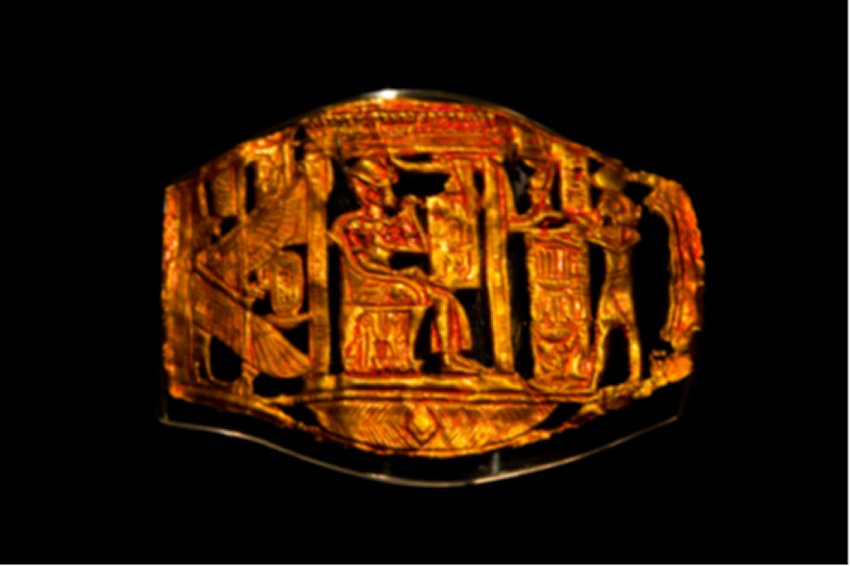
Ancients were in possession of very sophisticated knowledge. Ancient gold and silversmiths used mercury, which was produced more than 8,000 years ago in Turkey. Mercury was used for gilding (domes, interiors of cathedrals, religious figures and more) in many parts of the ancient world. Many of the ancients’ techniques are still unknown. They were so skilled that some of the quality they achieved has still not been matched. In ancient times, these sophisticated methods were used to produce and decorate different types of artefacts, such as jewels, statues, amulets, and commonly-used objects.
Gilders performed these processes not only to decorate objects but also to simulate the appearance of gold or silver, sometimes fraudulently. From a technological point of view, the aim of these workmen over 2000 years ago was to make the precious metal coatings as thin and adherent as possible.
This was in order to save expensive metals and to improve the resistance to the wear caused by continued use and circulation. Recent findings confirm the high level of competence reached by the ancient artists and craftsmen and stresses an artistic quality of the objects they produced could not be bettered in ancient times and has not yet been reached in modern ones. Read more
9. Ancient Computer: Enigmatic Antikythera Mechanism Still Full Of Secrets
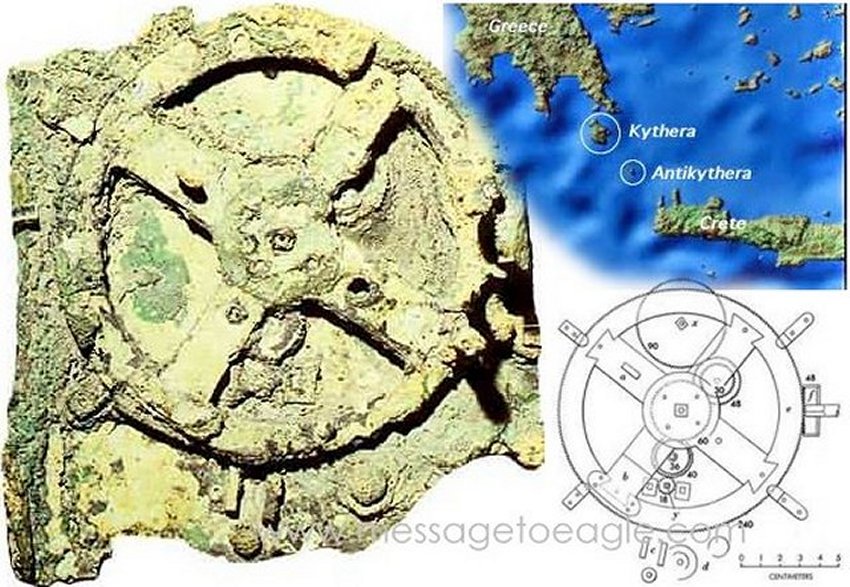
In 1900, an amazing encrusted bronze object of undetermined use was found on the small island of Antikythera, 25 miles northwest of Crete. One of the curious scientists decided to clean it and found that it was a complex instrument with cog-wheels fitting one into another.
See also: 10 Remarkable Similarities Between Ancient Civilizations 11 Mysterious Ancient Underground Worlds That Remain Unsolved 11 Extraordinary Out-Of-Place Artifacts
Finely graduated circles and inscriptions marked on the instrument in ancient Greek were apparently related to its function. Based on the cargo, it was dated to about the 1st century BC. It seemed to be a sort of astronomical clock without pendulum but no Greek or Roman writer has ever described such an ancient computer, though many other wonders of antiquity are mentioned. Read more
10. Highly Advanced Robots In Ancient China
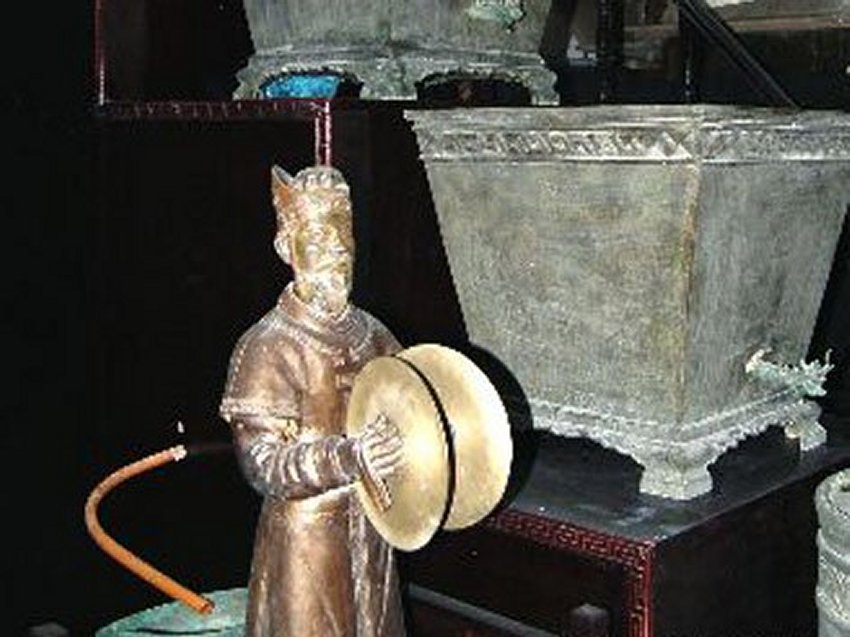
In ancient China we come across a number of highly advanced robots that could sing, dance, act like servants and perform many other surprising tasks. Some of these remarkable robots are even said to have possessed life-like organs such as bones, muscles, joints, skin and hair. It’s a quite remarkable considering it is only recently our modern civilization has started to develop human-like robots. There is no doubt mechanical engineering in ancient China reached a very high level.
Readers of MessageToEagle.com are familiar with the incredible ancient machines invented by Hero of Alexandria, or the remarkable Talos robot, but there are many more great examples of ancient robotics discovered in various corners of the world. History of robots in ancient China can be traced far back in time. Robots existed not only during, but also before the Tang Dynasty (618–907 AD). Read more
© MessageToEagle.com


